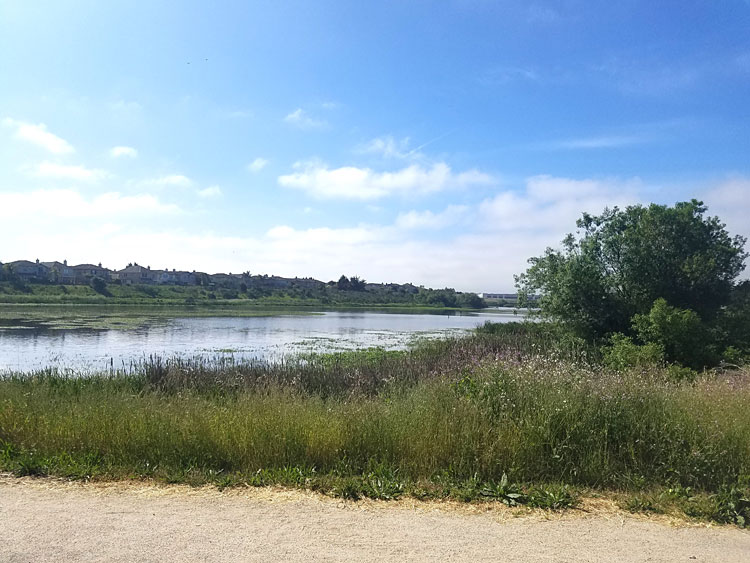Honoring Jim Van Houten

In honor of Jim we plan to build a bench overlooking the Hanson Slough habitat areas. If you would like to join the Watsonville Wetlands Watch Board of Directors in honoring Jim, please make a donation here in Jim’s honor to support the purchase of this bench. Please include any comments you would like to make to be shared with Jim’s family there in the Comment Box. https://www.watsonvillewetlandswatch.org/donate
Among Jim’s many accomplishments were the purchase and preservation of Tarplant Hill, serving with Chris Lyons as the negotiating team for the Pajaro Valley High School project and securing many important conservation goals, chairing the LAFCO Manabe annexation process, being a leading advocate for the Pajaro River corridor, and many other efforts to ensure the long-term viability of the Watsonville wetlands and the community that surrounds it.
Jonathan Pilch, Executive Director shares: “I think of Jim often, standing at the upper edge of the preserved land within the Hanson Slough watershed at the edge of our education center, that he and others were instrumental in preserving. Since that time, many critical pieces of the early vision of conserved wetlands, open space and habitat west of Highway 1 have been achieved.
“Jim would be waving one hand out into the open, describing to a group of visitors how the sloughs fit together and why the knoll on which we were standing was so important in a way that connected people to this special place, its history and future. He was a guide whose vision, passion, and ability to work with anyone from any view point will continue to inspire for many generations to come.”
History Nook
A peek into the geological history of the Watsonville sloughs:
To best understand how the sloughs came to exist, we can take a look back at some of the most recent geologic history of the Monterey Bay. Most basically, the reason for the Watsonville sloughs’ formation is a combination of coastal uplift and sea-level rise patterns.
When uplift is equal to or exceeds sea-level rise, freshwater marshes and deep peat soils can form. Underlying the Watsonville Sloughs is a clay layer that keeps water perched. This is a result of sea-level changes and valleys formed during the last glacial period. As the glaciers melted and sea levels rose, the ocean began to make its way inland while the streams from the mountains rushed to meet it. This convergence caused dense clays and sediments to settle, forming a layer that kept the slough water from infiltrating into the ground and deeper aquifers.
Continuing in this pattern over the last 18,0000 years, the sloughs have risen and fallen within the Pajaro Valley’s drainage. And while changes to the landscape, such as urban development, drainage and channelized wetlands, irrigation runoffs and pump stations have been built throughout the landscape, the sloughs still fill every winter and slowly dry out every summer and the floodwaters still seek the floodplain – our impacts have not pushed out this timeless geologic process.
•••
Source: Watching the Watsonville Wetlands by Jerry Busch